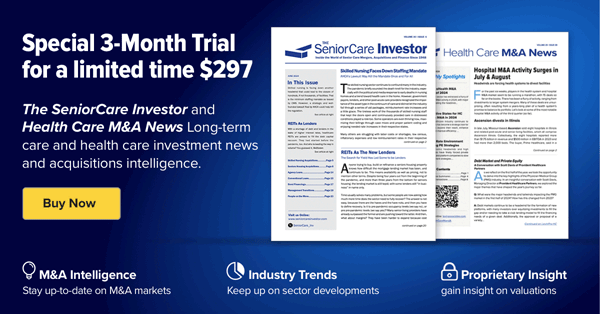
The editorial team at LevinPro HC attended BOMA International’s Medical Real Estate Conference last week and sat down with Lorie Damon, who leads the healthcare advisory practice at Cushman & Wakefield. Below is the Q&A of the conversation covering the medical real estate market.
Q: Can you provide a short background of you and the healthcare team at Cushman & Wakefield?
A: I lead the healthcare advisory practice at Cushman & Wakefield, comprised of more than 300 experts across our various service lines and real estate disciplines, including brokerage, capital markets, property management, project management and valuations.
Q: How would you rate/summarize the medical real estate market in the first quarter of 2024?
A: By the middle of 2023, we started to see a lot of pressures hit the market that have continued into 2024. Higher interest rates are one of the major headwinds, and that has resulted in significantly fewer investment sales and refinancings over the last several quarters. In addition, many pandemic-era programs designed to help health systems address COVID and pandemic-related healthcare needs were completed, including allowing continuous enrollment in health insurance programs such as Medicaid. This provision ended last year, and many states elected to stop allowing continuous enrollment, which in turn, resulted in many Medicaid beneficiaries losing insurance coverage. And, overall, labor costs and construction costs rose throughout the Pandemic, and those costs haven’t really come down, or rather, they have not returned to their pre-pandemic levels. As a result, we have seen many health systems and physician practices experience significant pressure on operating revenues.
Q: What property type (Medical outpatient buildings, ASC, urgent care, etc.) are you seeing the most investor interest and why?
A: We continue to see significant interest in all of these property types, both from a leasing and from an acquisition perspective. Well-leased and well-positioned medical offices, and specifically ambulatory surgery centers, remain highly desirable assets, and we continue to see care providers evaluate these assets for locating clinical services. We’re seeing a lot of interest for urgent care centers, especially with leased locations that are operational. Last year, we helped a health system client acquire more than 30 urgent care centers, helping them develop some long-range plans because some of those locations were approximate to existing locations. You don’t want to cannibalize your existing portfolio. We’re also seeing a lot of interest in behavioral health because reimbursement models have shifted and there has been an explosion of demand for services in this sector, especially after the pandemic. We have seen a number of new behavioral health providers enter the sector and look to grow rapidly by establishing leased locations in their target markets.
Q: What type of investors and buyers are you seeing in the medical real estate market?
A: Investment sales volumes are significantly reduced year over year. The most active buyers have been private capital and those who don’t need to access the debt markets for financing. We’re also seeing a lot of health systems and private equity-backed physician groups. Both are expanding through M&A, but the activity is primarily leasing demand, not necessarily property purchasing. Those groups are trying to expand their footprint. Even though there are a lot of pressures on the market, the demand for clinical care and the utilization of clinical care is back to pre-pandemic levels. And for physician groups and hospitals, their core business is clinical, so it makes why they’re trying to expand their portfolio where they can.
Q: What are some things clients need to be aware of as they try to expand?
A: Many healthcare providers are working to establish access points and economies of scale. Given the high cost of labor and construction, some are determining that they don’t need to be everywhere all at once. So as we work with our clients, we look first for capacity within the existing footprint (is there underutilized space that can be deployed for the clinical need?) instead of trying to find a new location. Many of our health system clients look for opportunities to increase density in larger locations because that density often allows them to optimize clinical care and maximize utilization.
Q: How do you think the rest of 2024 will look like for healthcare? Or even beyond?
A: That’s hard to say. We expect interest rates likely will remain the same for most of the year, and construction costs are still high, but we can adapt to those market forces if things are consistent at least. But there are other changes that I don’t think will go away. The cost of staffing, for instance, likely is not going to return to those levels before the pandemic. That’s a new reality we need to contend with, especially if providers really want to utilize their real estate portfolio: do they have adequate staff to cover widely dispersed clinical locations? But there are other things that can completely upend the market. What if we see new medications that help address heart disease or diabetes or cancer? Many of those innovations could fundamentally change healthcare and healthcare delivery. But those are big changes that are hard to predict. Healthcare will always be in demand; it’s more a question of how we meet those demands.
This conversation is part of an interview series we conducted at the BOMA International’s Medical Real Estate Conference in Orlando, Florida. We spoke with different advisors and investors to get an insider’s perspective on the trends defining the medical real estate market in 2024. This interview series is available exclusively on the LevinPro HC platform. Schedule a demo today to learn more about subscription options.


